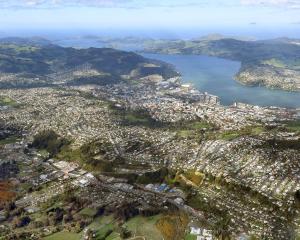

- Steamer Basin hurdle overcome
- Heritage precincts extended
- Move to protect most productive land
- Saddle Hill quarry likely to stay
- Warehouse development easier
Included in the plan is 190ha of new residential land - enough for up to 1200 new houses - and rules which make it easier to build family flats in most of the city.
Both the older district plan and the 2GP are now operational but the newer plan is still subject to the appeals process.
Appeals can be lodged within 30 days of the plan being publicly notified.
Council city development manager Anna Johnson said the plan had to be altered to ensure the city had the housing capacity to manage the projected increase in population in the next 30 years.
Of the 190ha of new residential land about 28ha is in Corstorphine (320 houses), 11ha in Halfway Bush (30 houses), 7ha in Abbotsford (43 houses), 6ha in Pine Hill (30 houses) and 6ha in Ocean Grove (90 houses).
An additional 132ha of land has been earmarked for future housing if required and the surrounding infrastructure, such as wastewater pipes, were upgraded to handle the increased development.
That land has the capacity for up to 1850 new houses in areas such as Northeast Valley, Kaikorai Valley and Corstorphine.

Changes also made it easier to build family (granny) flats in most parts of the city and meant some properties would no longer need as much on-site car parking.
New medium density areas will allow more houses on smaller sections, semi-detached or terraced housing, and two or three-storey apartment developments.
In the short term, the plan had the capacity to cope with the projected increase in population but in the medium to longer term the council would need to look at increasing the land available, Dr Johnson said.
The final plan is a culmination of more than six years of work which included a three year review, two stages of public consultation, strategic directions and options.
When the plan was released for formal submissions in September 2015, it drew 1055 public submissions and 452 further submissions.
Originally, the final plan was set to be released in September last year, but an extension was needed to finish the project.
The submissions were considered by a panel of six commissioners chaired by planning consultant David Collins, of Christchurch.
Mr Collins said the panel had to weigh up all the different considerations when making a decision and often there was no right or wrong answer but rather come to an overall judgement fair to all parties.
Dunedin was the first major metropolitan area in New Zealand which had gone through the full second generation plan process, he said.
All submitters could appeal to the Environment Court and all parts of the plan which were not appealed became operative and replaced the corresponding rules in the current plan.
To date the process has cost about $3.5million, which included the cost of consultants, legal advice and costs associated with the hearings panel and the hearings themselves.
It does not include existing staff costs.
An electronic version of the plan can be viewed on the council's website.












